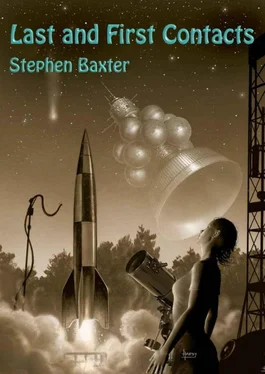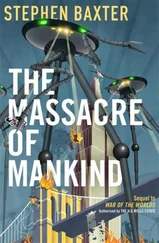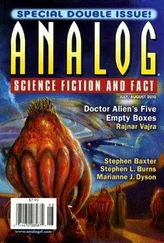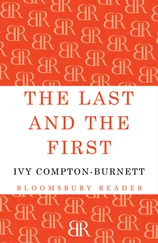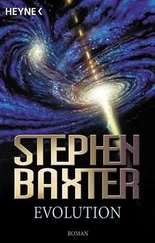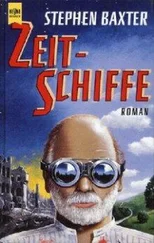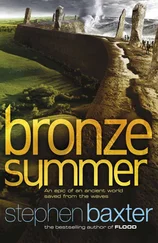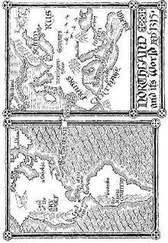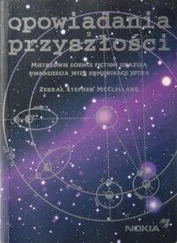Stephen Baxter - Last and First Contacts
Здесь есть возможность читать онлайн «Stephen Baxter - Last and First Contacts» весь текст электронной книги совершенно бесплатно (целиком полную версию без сокращений). В некоторых случаях можно слушать аудио, скачать через торрент в формате fb2 и присутствует краткое содержание. Город: London, Год выпуска: 2012, ISBN: 2012, Издательство: NewCon Press, Жанр: Фантастика и фэнтези, на английском языке. Описание произведения, (предисловие) а так же отзывы посетителей доступны на портале библиотеки ЛибКат.
- Название:Last and First Contacts
- Автор:
- Издательство:NewCon Press
- Жанр:
- Год:2012
- Город:London
- ISBN:978-1-907069-40-6
- Рейтинг книги:5 / 5. Голосов: 1
-
Избранное:Добавить в избранное
- Отзывы:
-
Ваша оценка:
- 100
- 1
- 2
- 3
- 4
- 5
Last and First Contacts: краткое содержание, описание и аннотация
Предлагаем к чтению аннотацию, описание, краткое содержание или предисловие (зависит от того, что написал сам автор книги «Last and First Contacts»). Если вы не нашли необходимую информацию о книге — напишите в комментариях, мы постараемся отыскать её.
Last and First Contacts
Last and First Contacts — читать онлайн бесплатно полную книгу (весь текст) целиком
Ниже представлен текст книги, разбитый по страницам. Система сохранения места последней прочитанной страницы, позволяет с удобством читать онлайн бесплатно книгу «Last and First Contacts», без необходимости каждый раз заново искать на чём Вы остановились. Поставьте закладку, и сможете в любой момент перейти на страницу, на которой закончили чтение.
Интервал:
Закладка:
‘We have fallen away from the Earth,’ Elstead said, his grin demoniacal in the starlight. ‘And, far more importantly, Susie, we have fallen into time …’
I threw up.
Elstead and Junge had both been prepared. Elstead had his boy-astronaut experience on the Soyuz, of course, and he had sent poor Junge for flights on a Vomit Comet. For me, spacesickness pills stopped the hurling, but I was fragile for the first hours of our journey – for such I now, tentatively, accepted it to be, though I still didn’t understand where we were going or how we were getting there.
I spent much of that time away from the bridge, exploring the Bathyscaphe. Some kind of displacement activity, no doubt, focussing on the fixtures and fittings rather than what lay beyond the walls. But I did need to learn to get around in free fall.
The core of the Bathyscaphe was a cylinder ten metres tall, maybe five wide. It was divided into three levels. The middle deck was the bridge, centred on our three couches. The upper deck, through which Elstead had led me from the surface, was a living space – cabins, a galley, washrooms. The lower deck was sealed off; it contained computer banks, a closed-system life support, and our power supply, a small nuclear plant. The decks were connected by ladders that were just as easy to navigate without weight. Elstead had borrowed Space Station design elements – the Velcro pads on the walls to which you could stick pens or handhelds, the strong colour scheme to give you a sense of orientation.
Our cylindrical hab was contained inside an outer hull, a sphere of hardened steel. The space between the hab and the hull was filled with – well, something strange.
I did try to sleep that night, in my bunk (now I found out what the straps were for). I kept dreaming I was falling, for so I was. I had a fantasy that we were plummeting down some vast shaft into the centre of the Earth.
But Junge showed me some of the raw feed from the hull cameras. If he swivelled the viewpoint I could see the curving hull itself, adorned with the Stars and Stripes, and the logos of Elstead’s companies, and bits of Mojave dirt clinging to the metal. And whenever the cameras tipped away from the ship, they filled up with stars.
Twenty hours after the ‘launch’, Elstead summoned me by intercom. ‘We’re approaching our first milestone. You will want to see this.’
Reluctant, fearful, I hauled my way to the bridge. The three couches on their spindly catwalk were suspended in a star field. I pulled myself over the catwalk and strapped myself into my seat. There was no sense of motion, but it made me feel more secure.
It seemed to me that the stars swam, constellations morphing like dreams. And behind the sprinkling of stars was something new, a cloudy veil; I thought I could make out colours, gold and brown. That too shifted, like a cloud seen through raindrops. I had no real understanding of what I saw.
Junge was locked into his machinery, but he was actually more empathetic than Elstead, who wanted only to dazzle and impress me, and he tried to explain. ‘Everything you see is processed. For one thing the light that falls on the ship’s hull is blueshifted – that is, Doppler-shifted. We have to render the hard rain of photons into something palatable to the eye.’
I knew from speed-trap technology that Doppler shift had something to do with relative velocities. ‘Blueshifted by what? Are we moving so rapidly?’
‘No,’ Elstead smoothly. ‘The blueshift comes from our falling through time. And our, umm, velocity is increasing. Maybe you can tell that from the way the nearby stars are swimming around the sky. Sol is one of a crowd of stars swarming around the giant black hole at the heart of the Galaxy. But beyond you can see another galaxy altogether – Andromeda. Two million light years away, the most distant object you can see with the naked eye. It’s just a faint smudge. In our day.’
The spangled cloud I saw was no faint smudge.
Junge pointed to one star, the brightest. ‘There is our sun. We haven’t come so far, really.’ Again he was trying to orient me, to comfort me. But I thought the sun’s light was red-tinged.
Elstead called, ‘I guess it’s time you started asking your questions, Susie. The two most basic must be – how are we journeying through time, and why ?’
‘Or maybe, how are you pulling off this monumental hoax?’
Elstead just laughed. Nothing I said ever seemed to offend him. ‘Where do you want to start?’
‘All right. How?’
Elstead nodded at Junge. ‘That’s the engineer’s department.’
Junge said, ‘The details are somewhat intricate. The principle is simple. Buoyancy…’
We delved into particle physics.
The universe is made up of several kinds of stuff. The visible matter, the ‘baryonic’ of which you and I are composed, is a mere trace, far outweighed by ‘dark matter’, mysterious stuff so evanescent it passes through the light stuff as if it wasn’t there, and interacts with it only through gravity. It’s so wispy in fact that not a single particle of it was detected until hypersensitive facilities came online in the late 2010s. But both kinds of matter are overwhelmed by a third sort of stuff called ‘dark energy’.
‘Dark energy is a kind of antigravity field,’ Elstead said. ‘It is driving the expansion of the universe. And we know, since 1990s observations of distant supernovae, that about six billion years ago the expansion, having slowed since the Big Bang, began to accelerate. Hence we know the dark energy field is becoming dominant.’
Junge said, ‘At any moment any volume in the universe – like this ship, Susie, or your own body – contains a mixture of these substances, dark and light matter, dark energy. But as time goes on, the dark energy component increases. And what we have done, with the facility under the Mojave—’
‘The particle accelerator.’
‘– is to find a way to increase the strength of the dark energy field in a specified volume. Specifically, in the Bathyscaphe’s interhull space.’
‘How?’ I asked, suspicious. ‘I thought dark energy is still little understood.’
Elstead said, ‘You don’t have to understand something to exploit it. My Cristal Industries cell phones work almost entirely on quantum mechanical principles, and nobody understands that after a century of trying. But as to the details – commercial confidentiality. Sorry, Susie.’
‘And when you’ve flooded the interhull space with dark energy?’
‘Buoyancy,’ Junge said. ‘Susie, our Bathyscaphe has been given the fundamental composition of an object from the far future – a time when dark energy will be by far the dominant component of the cosmos. And so the Bathyscaphe, umm, comes untethered in space and time. It’s exactly as a submarine floods its buoyancy tanks to dive. The Bathyscaphe is sinking towards its natural place in spacetime – and that place is the very deep future.’
‘But,’ I said, half believing, half alarmed, ‘I suppose we do have a way to blow the tanks.’
‘Oh, yes,’ Elstead said. He showed me panic buttons, big red slabs mounted on his and Junge’s consoles (though not mine). ‘Pressing these would lift us home immediately. I have no ambition to die in a spacetime hole.’
‘I suppose you have tested all this out?’
‘With unmanned drones,’ Junge said. ‘This is the first voyage of the Bathyscaphe itself.’
‘Call it a test flight,’ Elstead said. ‘Thrilling, isn’t it?’
Junge was peering at the wall monitors. ‘The merger is due.’
Elstead checked his lap display. ‘Right on cue. Susie, perhaps you know that our Galaxy and the Andromeda spiral are the two big beasts of our local group of galaxies. And they’ve been heading towards each other since they were formed. Some day in the far future they will collide – but we are in the far future, aren’t we? Enjoy the show …’
Читать дальшеИнтервал:
Закладка:
Похожие книги на «Last and First Contacts»
Представляем Вашему вниманию похожие книги на «Last and First Contacts» списком для выбора. Мы отобрали схожую по названию и смыслу литературу в надежде предоставить читателям больше вариантов отыскать новые, интересные, ещё непрочитанные произведения.
Обсуждение, отзывы о книге «Last and First Contacts» и просто собственные мнения читателей. Оставьте ваши комментарии, напишите, что Вы думаете о произведении, его смысле или главных героях. Укажите что конкретно понравилось, а что нет, и почему Вы так считаете.
